- Home
- Elizabeth Bear
Machine Page 2
Machine Read online
Page 2
I wondered how many generations had managed to live and die here. I wondered again if there were still people on board. I wondered if they had triggered the distress beacon, and if so, when.
What leads you to put a beacon on a ship that never plans on encountering another of its kind?
I knew less time had elapsed on this ship than for those of us who stayed home and joined the Synarche. Big Rock Candy Mountain was moving so fast after centians of acceleration that she had attained relativistic speeds. Every standard second we spent here was one point three standard seconds out in the rest of the universe.
Not a big difference, if you only stayed a week. It would mean roughly two extra diar going by in the outside galaxy. But over the course of half a millennian, the time dilation added up.
The pressure gauge in the inside hatch was more legible. It read .83, and since it maxed out at 1, I guessed that meant Terran atmospheres.
Tsosie and I took turns spraying each other’s hardsuits with decontam. We were the same species as the people who built this creaking, ancient vessel, but—in the thrilling eventuality that any were still alive—we and they were six hundred ans separated. Our microbes would eat their immune systems for lunch, and vice versa. It would be an enormous tragedy to reconnect with a lost branch of humanity only to start a pandemic and kill everybody on both sides.
So we wouldn’t do that.
“What we could learn from this place,” Tsosie breathed.
He let the pressure equalize, and suddenly I could hear the creaks and groans of the ancient ship around me. Strained metal and some distant thumps that sounded like the ring of machinery. No voices, and nothing that sounded like voices.
I thought I had been keeping my hopes down, but my spirits still fell. I wasn’t feeling particularly good about our chances of finding survivors. We had not been subtle about our approach—it doesn’t do to sneak up on people—and if anyone was still driving this thing, surely they would have answered our hails. Radio was radio. Or they would have come to meet us at the airlock, or at least sent a bot.
Artificial intelligences dated back to before the Eschaton, and Sally’s data library suggested that most of the generation ships had shipminds of a sort. Wheelminds? I didn’t even know what nomenclature you’d use for a ship this big.
Nobody spoke to us, even when I said the ship’s name out loud, amplifying it through my hardsuit speaker, and requested permission to enter.
Well, maybe somebody was on the other side of the hatch.
Tsosie tipped his head and dipped his shoulder, the broadly expressive gestures of somebody used to communicating through a hardsuit. “Here goes nothing.”
“Give it your best,” I said, and watched him lean on the hatch wheel.
* * *
Tsosie swung the hatch wide, and—nothing happened.
Nothing besides a brief puff of equalizing air, that is. I hadn’t really expected a welcome party, but it would have been a nice surprise.
“Huh,” he said, peering around the hatch. “Well, that’s interesting.”
That’s not a reassuring thing to hear when you’ve just broken into a space ship older than your species’s membership in civilization. I leaned sideways to peer over his shoulder.
The entire corridor was filled with what seemed at first to be a strange sort of honeycomb or spiderweb. The illumination was working—not something I would have counted on, after all this time. Let’s hear it for good old-fashioned fusion reactors.
Because the ship spun like a station to simulate gravity, we were standing on the bulkhead that faced the outside of the wheel. Big Rock Candy Mountain was enormous, and I could see quite far down the corridor before the curve of the ship bent out of sight in the distance. The whole space seemed filled with… building toys?
Something very similar, anyway, to the sort of peg-and-keeper sets that children of many species with manual dexterity are normally given as they begin to develop curiosity and the ability to use their fingers independently. If they happen to have fingers. These seemed to be printed or extruded in polymer and plated in what I took to be a conductive material of a shimmering, holographic metal. The whole structure created a mesh of interlocking hexagons that entirely filled the passageway.
“Structural reinforcement?” I asked, making sure we still had a connection back to our ship.
“It might be,” Sally agreed. I could feel her relaying Tsosie’s feed—and my feed—to the other four members of the crew. Loese, our new pilot; Hhayazh, a flight nurse; Rhym, the flight surgeon; and Camphvis, the other flight nurse.
It seemed like we were all equally mystified. We’d sent two out of the three Terrans in the crew (Loese was the other one) on this trip out of caution. We couldn’t expect any survivors aboard Big Rock Candy Mountain to have ever encountered a nonhuman sentience. And Hhayazh, in particular, is the sort of twiggy, bristle-covered, black-carapaced insectoid sentience that gives groundlubbers the shrieking jimjams.
Nobody was going to have the shrieking jimjams on my watch if I could possibly help it.
These structures didn’t seem sinister. They refracted light in bright, human colors. Not all primary—purple and orange and green made appearances—but all true and saturated. Kid colors, accentuating their resemblance to toys.
“There’s too many colors for it to be a DNA model,” Tsosie said. “Unless the same amino acids are wearing different dresses.”
I reached past him, and poked the nearest peg with my finger, causing him to gasp and grab my wrist an instant too late to stop me.
Poor life choices got me into this line of work: What can I say?
I didn’t really expect it to react. But I guess I should say that I poked at the nearest peg with my finger, because the whole structure peeled away from my hardsuit before I touched it and rippled with a series of whick-whick-whicking sounds into a folded configuration against the walls of the corridor. It left more than enough room for Tsosie and me to walk side by side.
“If we go in there it’s going to reassemble itself right through our bodies, isn’t it?” Tsosie asked.
“Maybe it’s shy.” I stepped past him, out into the corridor. He let go of my wrist as soon as I started to move. It had been a warning gesture, not a real attempt to restrain me.
Not that he could have. I was the one on the crew with the law enforcement background. And the adaptive exoskeleton under my hardsuit, giving me boosted reflexes and strength.
I paused briefly, and the tinkertoys didn’t nail me into place like a shrike’s victim. That was a good sign. I reached out again, and they peeled away from me again.
“Seems safe,” I said.
Tsosie made a little choking noise. But he followed me, boots clomping only a little. We were both, I noticed, making an effort to walk softly. It’s always hard when you first get back under grav—or simulated grav—not to crash around like one of the elephantine high-gravity systers in a proverbial china shop. The toys continued to peel apart ahead of us, and sealed themselves back up behind. “Maybe they are structural reinforcement.”
“Microbots,” Tsosie said, bending closer to inspect some of them. “Only big.”
“Where do you get the raw material to make this many… microbots? After six hundred ans in space, anyway?”
“Excellent question,” Sally said. “Keep exploring.”
CHAPTER 2
HOW ON EARTH DID THIS ship ever get this far from Terra?” Tsosie asked.
It was a terrible joke, and I refused to laugh. “It’s moving pretty fast.”
“Not that fast,” Sally said, deadpan. “I did the math.”
We both laughed at that one. Sally couldn’t help but do the math. Math was literally her entire being. The processors she inhabited were… houses. She was made of code. Elegant, elaborate, exquisite code.
I’d wanted to work on AIs when I was a kid, but I didn’t have the chops for it. So I knew just enough to appreciate what a beautiful thing she was.
/>
“Seriously,” Tsosie persisted. “How did it get out here?”
Part of doing what we do is staying frosty. Staying focused on the task. Humor helps with that; helps you keep your distance and keep your cool. The rightminding helps, too. If you feel what everybody you’re prying out of the wreckage feels, that empathy can be debilitating.
I have no idea how people managed it back in the old diar. Such as the era this ship was from.
Tsosie was staying alert by talking about stuff we’d already been over, to keep a conversation going. “How did it get all the way here? There’s no possible way it could have covered this much distance at sublight speeds in that amount of time.”
He wasn’t wrong, but I didn’t want to think through it now. It made me shiver. There were too many unexplained things about this ship. Why was she here? Where were her crew? Why the distress signal? Why had the methane-breathing crew of the docked vessel fallen silent? And where were they?
So many questions, and an insignificant number of answers.
I didn’t have any more time to be scared now than I’d had when I was jumping. It wasn’t my job to be scared. It wasn’t my job to theorize, and it wasn’t my job to get excited about the archaeological opportunities.
“Wormhole?” I offered, in a tone of voice intended to indicate how tentative an offering it was.
“Are they theoretically possible this week?” Tsosie asked. It sounded like a genuine question. He was a hardass, but whatever his other quirks he wasn’t sarcastic.
That was Hhayazh’s defining bit of… personality.
“Sort of,” Sally said. “Maybe. I mean, wormholes are possible. Looked at the right way, white bubbles are wormholes. Sort of. Tesseracts, anyway. Traveling through naturally formed wormholes, on the other hand… without being compressed, squished, topologically transformed, and generally spaghettified…”
If she’d had a head, she would have been shaking it.
“Okay, so Big Rock Candy Mountain didn’t drop through a natural hole in space-time. And she didn’t go faster than light, unless somebody boosted her somehow. Jury is still out on artificial holes in space-time, however.”
Alcubierre-White drives weren’t true faster-than-light travel, which still remained hypothetically impossible. They put your ship into a little bubble that compressed everything around it. So you didn’t move. Rather, the universe flowed past you like one of those old-timey murals they used to paint on a roll of canvas and spool past people sitting still in chairs, so as to simulate travel. Back on medieval Terra, or whenever.
So, technically you didn’t move. But your relative velocity could be a good deal faster than light, depending on how much power you could manage to throw at it. Sally had a lot of power.
White drives were kind of a dick move when it came to respecting the laws of physics.
A white drive would work on a ship like the one we were in. It didn’t require a lot of structural strength to sit still. But the energy requirements to build a space-time bubble around it… I didn’t think even antimatter, at least antimatter in containable quantities, could manage it. Big Rock Candy Mountain was just… too big.
“She’s moving somewhat faster than she should be, even if she’d been under constant acceleration since leaving Earth. And giving a reasonable wiggle factor for gravity wells along the way boosting and slowing her. Plus she’s on the wrong vector.”
“Thanks, Sally. So… she’s gone a lot farther using that initial v and her drive capability than she should.”
“Right,” said Tsosie. “That’s what I was saying.”
“That’s not worrisome at all.”
“Right,” said Tsosie. “That’s what I was saying.”
“I’ll keep working on it,” Sally said. “It’s possible they tried some slingshot maneuvers for extra velocity. In the meantime, pull out your sample kits. There’s dust in the corners. Some of it might be shed skin fragments containing DNA. Vacuum it up and analyze it, would you?”
* * *
We found the bridge soon after. Not by accident: we had the ancient plans and schematics and had been aiming in that direction. If anybody was left alive on this ship—if anybody was left at all on this ship—perhaps this was where we would find them. But when we entered, it was nearly dark and nearly silent, except for a rill of green and amber lights around the edge of the room at counter height, accompanied by a melodious beeping.
A moment later, lights began to brighten, and Tsosie and I found ourselves standing on what once must have been a fairly pleasant, beige and slate-blue bridge. The layout was semicircular; we had entered from the flattish side. Large dark viewscreens covered the arcing wall in front of us, and two rows of consoles and chairs curved around a single central command chair.
We stood behind that one, but slightly above it, as the stations we were near were slightly elevated. Oddly, in my experience, they all had tall chairs shaped for humans. The consoles all had dedicated push buttons and switches and dials, not adaptive consoles like the ones I’d worked with all my life, even back on Wisewell, the frontier settlement where I’d grown up, been orphaned, got married, had a kid, and left the first chance I’d been offered. Those consoles and chairs were the thing that brought home, unsettlingly, that everybody on this ship really had been a Terran human. Knowing something intellectually and realizing it in your bones are very different.
Because of our elevation, and because the command chair was turned toward the back of the room, we could see that the seat was not empty. And that the jumpsuit-clad person in the chair had been there for a very long time, and was not likely to move from it under their own power ever again.
* * *
On the other side of the bridge, Tsosie and I kept on walking. The tinkertoys were back, and watching those modular lattices click apart ahead of us and click together behind us as we got farther and farther from the egress made me even more unsettled than the dead body in the command chair had. We could cut our way out through the hull if we had to—a rescue hardsuit, especially backed up with the physical power of my exo, was more than capable of rearranging the generation ship’s superstructure. I wouldn’t do that unless our lives were in imminent danger, however. It would kill any crew members in the areas of the ship I would inevitably decompress in the process.
And piss off the archaeological team.
Assuming for the moment that there were any crew members left on this ship—an assumption that was seeming less and less probable with every weirdly echoing step Tsosie and I took—it was my job to save them, not murder them.
There had been skin cells in the dust I collected, at least. And all of them were Terran. People like me and Tsosie, only six hundred ans removed. Six hundred of their ans—years, to use the old style—and closer to a millennian for us, I guessed. Time gets really funky when you’re zipping around the galaxy at relativistic speeds and information still travels either through white space packet, or by slow boat or electromagnetic progression.
That’s one of many reasons why I am not an archinformist. They have these plots of events happening at different times and in different places and where the information fronts of those events intersect. It’s like trying to read a contour map while somebody spins it in the air in front of you and the colors keep changing.
So. A ship full of missing Terrans. Missing, bar one: the body that we—or one of our sister ships still inbound—were going to have to come back to collect and transport eventually.
Inside the hardsuit, I licked my lips uneasily. The hairs on my arms horripilated and my palms grew cold.
Intuition is a real thing, though there’s nothing supernatural about it. It’s not without mysteries, however. The human brain (and presumably, the nonhuman brain as well) gathers and processes a lot of information in excess of that which we are consciously aware. It doesn’t use words or often even images. It deals with feelings and instincts, and that glitchy sensation that you can’t trust somebody, or that something
is wrong.
So when I say that I had the increasing, creeping conviction that the generation ship’s endlessly rolling wheel was deserted, that it felt empty, I don’t pretend there was any higher knowledge behind it. But I was sure there were plenty of subtle clues, even if I couldn’t have named a one of them.
My conscious awareness was pretty busy riding herd on a half dozen exotic ayatanas and the processing issues that all of them were having with the alien (to them) environment and my human sensory input.
There’s a common misconception that wearing an ayatana is sharing your brain with somebody else. And it’s not, exactly. It’s more like having someone else’s memories and opinions and experiences to draw upon… along with their neuroses, preconceptions, trigger issues, and prejudices. Because nothing in this galaxy can ever be simple.
But I had two different methane species loaded, including one from a Darboof staff member. That was the species that was driving the fast packet we’d seen. Or had been driving him, at least: they might be gone now, too.
I’d also gone deep in the Core General archives and pulled the most archaic human ayatanas I could find, and a couple of systers recorded around the time of first contact with my species.
It’s generally contraindicated to load more than a couple of ayatanas at once, but I’m a trained professional with years of experience. Kids, don’t try this at home.
Inside my head, the methane breathers in particular were having fits about what, to them, was a blinding, flesh-melting level of light and a profoundly unfriendly hot environment. Balancing that and keeping myself alert in the confusing, constantly altering environment of the microbots and the creaking ship took up a lot of my attention. Managing my pain levels—they’re chronic—took up a little more.
So I didn’t notice that we hadn’t heard from Sally in quite some time—not until Tsosie said her name, and nobody answered.

 Scardown
Scardown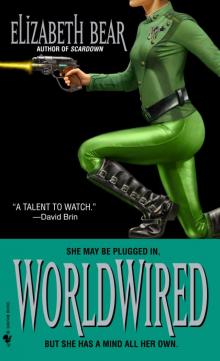 Worldwired
Worldwired Ancestral Night
Ancestral Night Hammered
Hammered The Red Mother
The Red Mother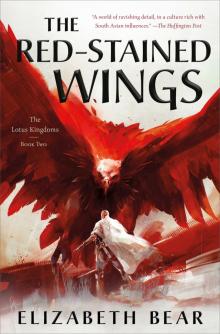 The Red-Stained Wings--The Lotus Kingdoms, Book Two
The Red-Stained Wings--The Lotus Kingdoms, Book Two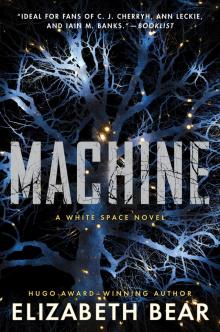 Machine
Machine Some of the Best from Tor.com: 2019 Edition
Some of the Best from Tor.com: 2019 Edition Faster Gun
Faster Gun In the House of Aryaman, a Lonely Signal Burns
In the House of Aryaman, a Lonely Signal Burns Stone Mad
Stone Mad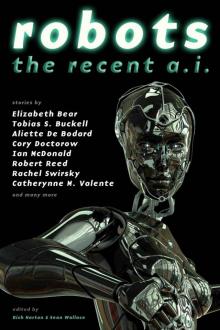 Robots: The Recent A.I.
Robots: The Recent A.I. The Tempering of Men
The Tempering of Men Boojum
Boojum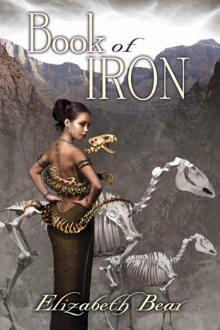 Book of Iron bajc-2
Book of Iron bajc-2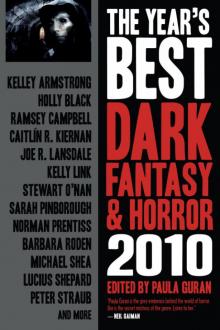 The Year's Best Dark Fantasy and Horror, 2010
The Year's Best Dark Fantasy and Horror, 2010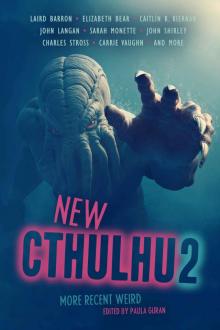 New Cthulhu 2: More Recent Weird
New Cthulhu 2: More Recent Weird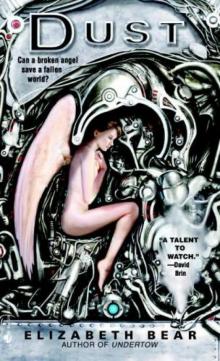 Dust jl-1
Dust jl-1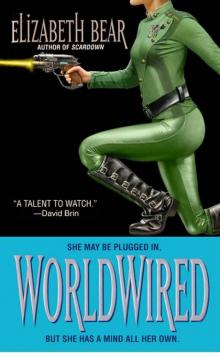 Worldwired jc-3
Worldwired jc-3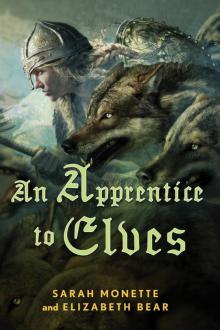 An Apprentice to Elves
An Apprentice to Elves Hammered jc-1
Hammered jc-1 Crowd Futures: We Have Always Died in the Castle
Crowd Futures: We Have Always Died in the Castle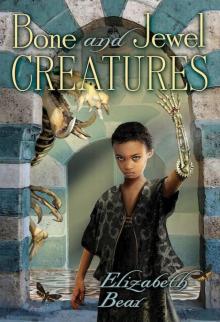 Bone and Jewel Creatures bajc-1
Bone and Jewel Creatures bajc-1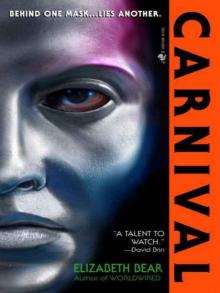 Carnival
Carnival Some of the Best from Tor.com: 2012 Edition: A Tor.Com Original
Some of the Best from Tor.com: 2012 Edition: A Tor.Com Original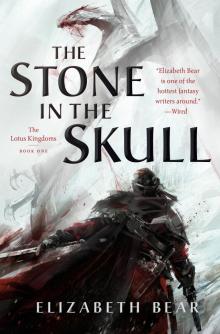 The Stone in the Skull
The Stone in the Skull Scardown jc-2
Scardown jc-2 Hell and Earth pa-4
Hell and Earth pa-4 Undertow
Undertow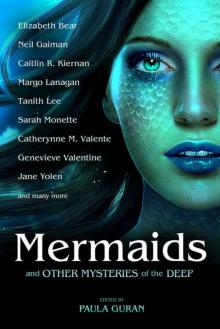 Mermaids and Other Mysteries of the Deep
Mermaids and Other Mysteries of the Deep A Companion to Wolves
A Companion to Wolves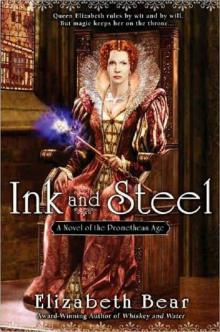 Ink and Steel pa-3
Ink and Steel pa-3